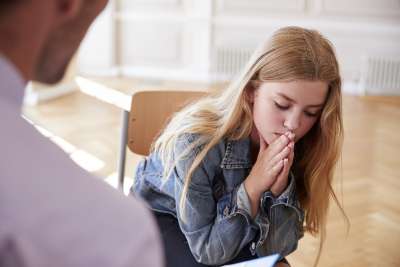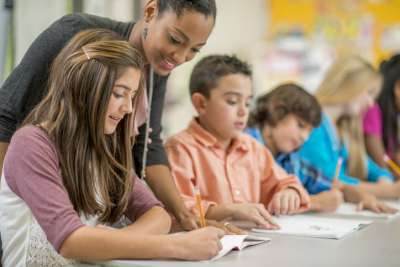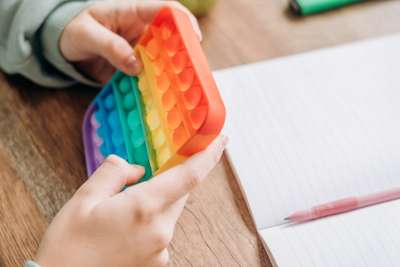Marlee Chizhevsky is a Special Education teacher, case manager, and curriculum writer in Chicago, Illinois, with a focus on social-emotional learning, neuroeducation, and brain-based learning research.
Here she shares strategies for teaching self-regulation that help learners build self-awareness, self-control, and problem-solving skills in the classroom environment.

Self-regulation is the ability to manage one’s emotions, impulses, and behavior in an appropriate manner for a given situation. Self-regulation skills allow us to manage intense emotions in stressful situations, calm down after something upsetting occurs, handle change with flexibility, and deal with frustration without having an outburst.
Self-regulation is not always an innate ability and children should be taught effective strategies to use throughout their lives. Children might struggle with self-regulation for a number of reasons, including having experienced neglect in early childhood, feeling unsafe or insecure, or simply never learning effective strategies. Likewise, children with ADHD often have a more difficult time with self-regulation due to deficits in their prefrontal cortex, which is largely responsible for impulse control and executive function.
Strategies That Build Self-Regulation Skills
Emotional Check-Ins
Recognizing and identifying how we are feeling - happy, sad, anxious, scared, etc. - is important for emotional regulation and building self-awareness. Enabling students to build self-awareness in this way is the first step in self-regulation and self-monitoring.
Research shows that when we are experiencing strong emotions, labeling the emotion activates our prefrontal cortex (our more logical brain) and lessens activity in the amygdala (our more emotional brain), which puts a halt on impulsive, emotional reactions. Author of The Whole Brain Child, Dr. Dan Siegel, calls this process “Name it to tame it.”
An emotional check-in can be used as a daily activity or strategy students can use to identify how they are feeling at a particular moment. Labeling their own emotions and feelings has a number of benefits. First, it gives children the vocabulary to discuss what they are feeling, rather than keep it inside. Labeling the feeling allows us to find an appropriate solution or coping mechanism as well. Second, labeling feelings is validating for children. It lets them know that you understand what they are going through, which makes them feel supported and helps them process hard emotions.
Cognitive Reframing
Cognitive reframing is changing unhealthy thought patterns. The purpose of cognitive reframing is to reinterpret a situation in order to change your emotional response to it. As classroom teachers, when a student is being noncompliant, we often think to ourselves, “This student is really testing me. Why does he want to make my life so difficult?” This thought pattern is unhealthy and nobody will benefit from it. Instead, thinking to ourselves, “This student is having a really difficult time, I wonder what’s going on with him that is causing him to struggle,” is going to be a lot more productive. It is productive for you because you’re not taking the behavior as a personal attack, and it is productive for the student because you can then help him to figure out a solution or coping strategy.
This also works well as a student self-regulation strategy. Teaching students ways to reframe their thought patterns and introducing a growth mindset approach, helps to build their self-regulation skills, and has a positive impact on their mental health and well-being.
Mindfulness & Deep Breathing
Mindfulness is proven to support positive health and well-being but is also a very useful tool for teaching self-regulation. Mindfulness is all about paying attention to one’s thoughts, feelings, and bodily sensations, and then recognizing and accepting them. Numerous studies have shown that engaging in mindfulness exercises, such as focused breathing and gratitude, improves attention, helps regulate negative emotions, and improves executive functioning skills. There are several mindfulness programs and apps available to teachers, some of which include Calm, Headspace, The Smiling Mind, and Dreamykid.
Deep breathing is an element of mindfulness that is particularly useful when students are experiencing strong emotions. Deep breathing and calm-down exercises help children to deal with those strong emotions and find coping strategies. Integrating this into the learning environment with dedicated calm-down zones can help students get used to using mindfulness and deep breathing as self-regulation strategies.
Remember, self-regulation is beneficial for everyone, both in and out of the classroom. It’s an important aspect of social-emotional learning but also helps to build a positive classroom environment and develop self-regulated learners.





